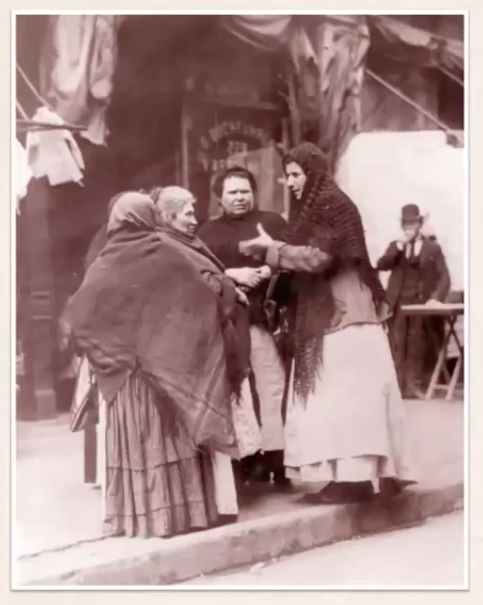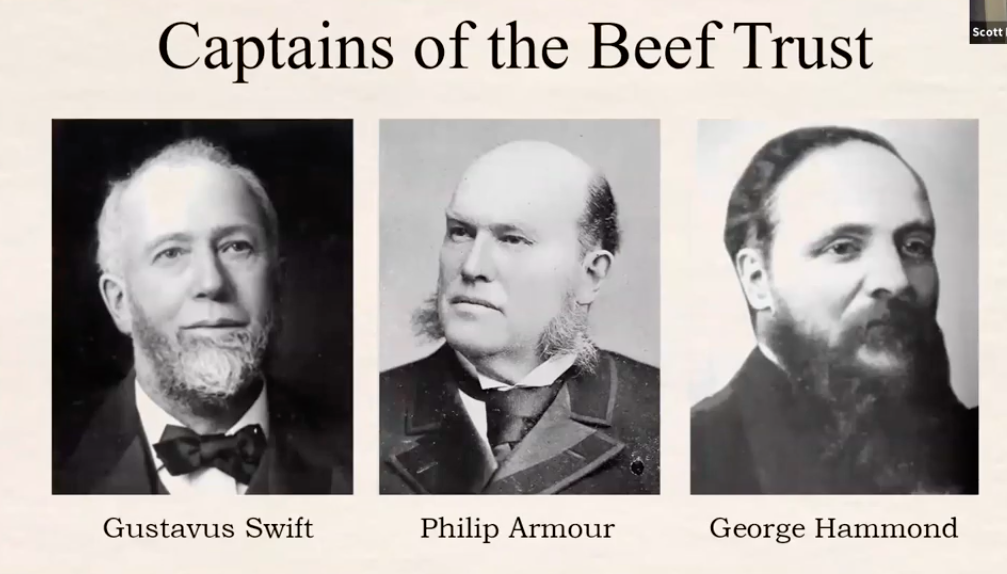How the women of the Lower East Side forced the hand of the Beef Trust in The Great Kosher Meat War of 1902
By Sue Weston and Susie Rosenbluth – Two Sues on the Aisle
The women on the Lower East Side knew how to stretch a penny, they found a way to put food on Shabbos the table, and life went on until the price of beef rose suddenly from 12 cents to 18 cents per pound (a 50% increase). That was too much! The women took charge, greenhorn immigrants who spoke Yiddish met, planned, and mobilized, taking their message to the streets. Scott Seligman, historian, and genealogist explores the Lower East Side of this great-grandmother in his book The Great Kosher Meat War of 1902 (available on Amazon and Nebraska Press).
An Unusual Group of Organizers
This was a true grassroots movement, which began on May 14 when Sara Edelson (mother of six) called a meeting in her family saloon, the Monroe Palace. She was expecting 50 people and 500 showed up, including Caroline Schatzberg, a 51-year-old widow with seven children, and Paulina Finkel, age 32 mother-of-four. They began by placing announcements in the Yiddish papers and obtaining a permit to protest. Then they went door to door encouraging other women to support the boycott.
They planned to keep the butchers closed hat until the price returned to 12 cents. They understood that if you don’t buy, the prices go down.
Why the Prices Rose
The women did not know that meat prices were being inflated by the Chicago-based meatpackers known as the Beef Trust. This practice has since been outlawed, but the 1900s was the era of the robber barons, industrialists colluded to control prices in industries including meat, steel, oil, and railroads.
The Beef Trust agreed on the amount to pay ranchers and to charge butchers, they limited the supply of meat which created demand, kept prices high, and guaranteed their profit.
Kosher Meat Remained More Expensive
Refrigerated railroad cars, introduced in the 1890s changed the non-kosher meat market, allowing centralization of slaughtering in Chicago, and transportation of tightly packed carcasses which significantly lowered production cost.
But this does not work for kosher meat which needs to be koshered within 72 hours. It meant that kosher meat still needed to be shipped alive, on the hoof, and slaughtered locally at one of the three slaughterhouses located in New York, all of which added to the high cost of kosher beef.
So, when the price of steer increased from 5½ cents to 7 cents a pound the Beef Trust passed the increase on to the butchers, who in turn raised the price to consumers. On May 11, 400 kosher butchers tried to protest the price increase by shutting themselves down for 4 days. But the Beef Trust was too powerful and refused to budge.
The Boycott Begins
At dawn on May 15, 1902, 3,000 women took the streets, divided into squads of five. Each squad was positioned on the streets to prevent the butcher shops from opening and to stop customers from entering the stores. The women wanted to show that eating meat was not a necessity.
The protest was intended to be peaceful, but it slowly got out of control as protesters heckled and assaulted shoppers. They grabbed away the purchased meat, threw it into the gutter, and doused it with gasoline. They felt their actions were justified since their purpose was to prevent people from eating meat. Butchers who refused to close had their windows broken. The police were called in, and the boycott made the papers.
Jewish housewives in Brooklyn, the Bronx, Harlem, Newark. Philadelphia and Boston joined the protest. The newspapers called it a modern Jewish Boston Tea Party.
The boycott got out of control as protesters assaulted shoppers
Organized and Focused
The women organized a civilized boycott; they began on Wednesday but stopped on Friday before Shabbos. On Shabbos, the women went to the synagogues to get support from the men. To keep the community engaged they printed flyers in Yiddish and visited apartments checking pots to make sure meat was not being served.
By June 9, the price had dropped to 14 cents a pound. The boycott was officially settled through negotiations led by men.
Corrected Concerns about Kosher Meat
The attention given to kosher meat was instrumental in correcting concerns about kashrut, which prompted the Association of American Orthodox Hebrew Congregations to bring Rabbi Jacob Joseph to America in 1888 to oversee the supervision of the kosher meat supply in New York. He changed the kosher meat and poultry industry, by hiring qualified shochtim, introducing irremovable seals (“plumba”) to identify kosher birds. Seligman told us that in the 1900s the wealthy ate chicken), and setting up Mashgichim to oversee slaughterhouses.
The Amazing Women of the LES
Although the price reduction was short-lived, these women had exercised their right to demand fair prices, to protest publicly, and to speak freely and openly. They understood the power of community and rallied together to boycott meat.
These women, emerged from obscurity to lead the 1902 meat boycott, accomplished what they wanted, affordable meat for their Shabbos tables, and then quietly returned to their roles as wives and mothers.
***
Two Sues on the Aisle bases its ratings on how many challahs it pays to buy (rather than make) in order to see the play, show, film, or exhibit being reviewed. 5 Challahs is our highest rating.
The Kosher Meat War of 1902, a virtual book talk provided by The Lower East Side Jewish Conservancy received a 4 challah rating.








